![Survival basics: Collecting and making kindling [22+ examples] Survival basics: Collecting and making kindling [22+ examples]](https://survival-kompass.de/img/artikel/zunder-feuer-machen-guide.jpg)
Survival basics: Collecting and making kindling [22+ examples]
👉 The key facts from this guide
- What is tinder: Tinder is a material that ignites quickly and easily and can be used as fuel for fire.
- Natural tinder: There are various types of natural tinder materials, such as birch bark, fatwood, tree fungi, and dry grass.
- Homemade tinder: It is possible to make tinder materials yourself, for example by soaking cotton in wax or making charred cotton.
- Commercial tinder: There are also commercially available tinders, such as waterproof matches, fire starters, or a magnesium block.
- Important properties of tinder: Tinder should be easily ignitable, moisture-resistant, and long-lasting.
- Use of tinder: Tinder is used to ignite a fire by coming into contact with a spark or flame.
You are in the wilderness and need a fire.
Now, find the right tinder or use the tinder you made yourself.
Tinder from nature has to be sought and could be wet.
With homemade tinder, you are mostly on the safe side.
I will show you what possibilities you have in the article.
What is Tinder, and Why Do You Need It?
Tinder is a fine, dry, and highly flammable material that is needed when making a fire. It catches sparks and either smolders or burns. Typical tinder materials include birchbark, dry grasses, cotton fibers, or Fatwood.
And this is how it works without a lighter or matches:
- With a fire striker and flint or with a Ferro rod, a spark is created.
- The tinder is there to catch this spark.
- Once the spark lands in the tinder, it starts to smolder.
- The tinder is then placed in a tinder nest (e.g., from dry grasses).
- You then create a flame with the tinder nest and ignite your fire.
Reading tip with video: "2 foolproof tricks: Lighting a fire with a ferro rod".
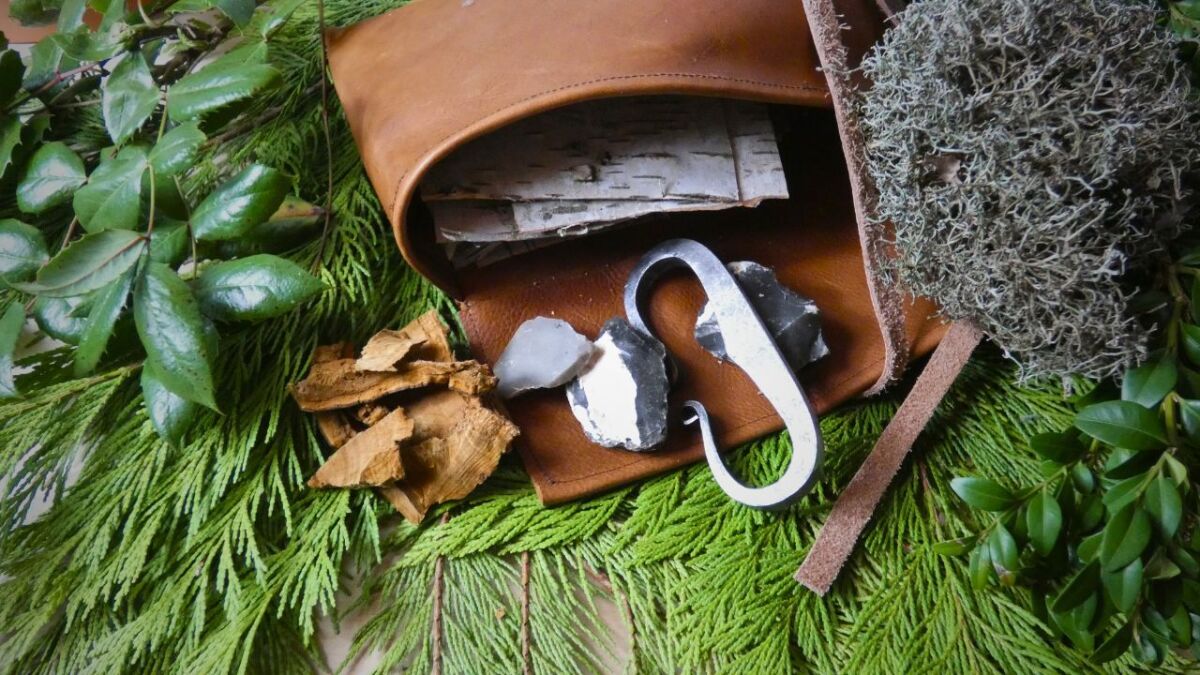
Especially in the field of Bushcraft, Survival, and the outdoors, tinder is one of the basic materials for a trip into the wilderness.
Let's take a closer look at tinder for fire making now.
Which is the Best Tinder for Starting a Fire?
Fatwood and birchbark are the best tinder for starting a fire. Even if these materials are moist, they ignite beautifully, and a sustained flame is produced.
Allow me to explain to you why Fatwood and birchbark are so well suited for tinder:
- Fatwood, also called pine knot or lighter wood (called Fatwood in English), comes from the roots or lower branches of pines. This part of the tree is particularly resinous and can be easily shaved into fine slivers. The content of resin ensures that the Fatwood catches fire quickly even when it's moist. Simply gather a handful of shavings to make a Fatwood nest, and you'll have first-class tinder.
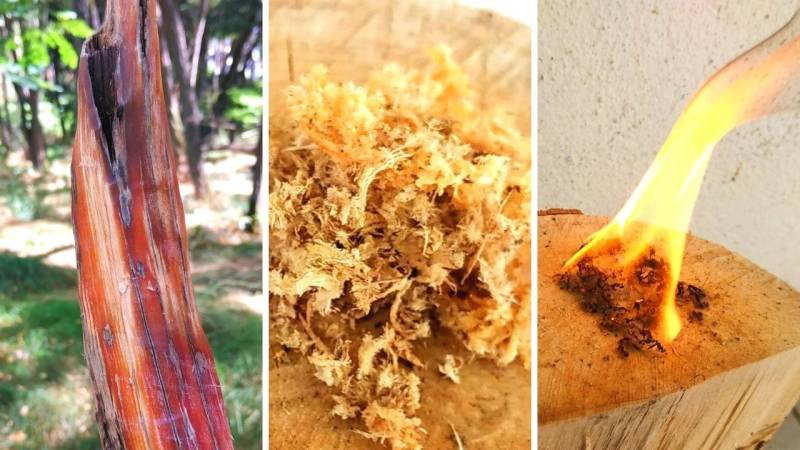
- Moreover, the outer light bark of the birch tree is perfect as tinder because of its paper-like and easily ignitable oils. Carefully peel the outer bark pieces from the birch trunk and crumble them between your fingers to form a soft pile. This birch tinder will reliably provide you with the necessary embers for your campfire.
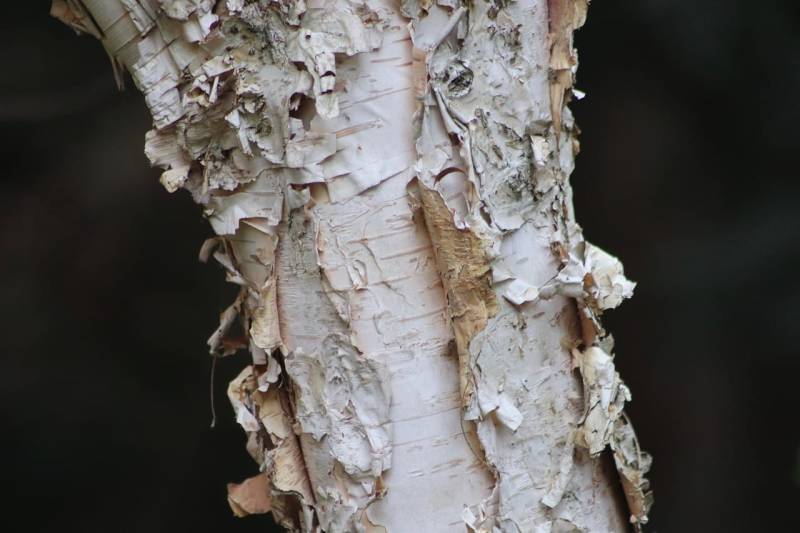
Both materials can be found in most forests of our latitudes.
With a little practice, you can use them quickly and easily for tinder gathering.
20+ Examples of Tinder for Fire Making
Below you will find my extensive list of tinder.
For an initial overview, I have created a table.
| Tinder | Immediately usable | Ember tinder | Flame tinder | Burn duration | Ideal for | Suitable for |
|---|---|---|---|---|---|---|
| Birchbark | Yes | x | Medium | Ferro rod | Beginners | |
| Fatwood | Yes | x | Long | Ferro rod | Beginners | |
| Tinder fungus | No | x | Long | Ferro rod, Fire striker | Advanced | |
| Coal fungus | Yes/No | x | Long | Ferror rod, Fire striker | Beginners | |
| Plant fibers | Yes | x | Short | Ferro rod | Beginners | |
| Cattail | Yes | x | x | Very short | Ferro rod, Fire striker | Beginners |
| Feathersticks | No | x | Short | Ferro rod | Advanced | |
| Windborne seeds | Yes | x | Very short | Ferro rod | Beginners | |
| Punk Wood | Yes | x | Long | Ferro rod | Advanced | |
| Charred cotton | No | x | Short | Fire striker | Beginners | |
| Coconut fibers | Yes | x | Medium | Ferro rod | Beginners | |
| Tampon | Yes | x | Short | Ferro rod | Beginners | |
| Cosmetic cotton pads | Yes | x | Short | Ferro rod | Beginners | |
| Charred makeup pads | No | x | Very short | Fire striker | Beginners | |
| Homemade charcoal | No | x | Medium | Fire striker | Advanced | |
| Cotton tinder | No | x | Medium | Ferro rod, Fire striker | Advanced |
Explanations:
- Immediately usable: Tinder is immediately usable when it is dry.
- Ember tinder: Tinder only smolders and must be transferred into a tinder nest.
- Flame tinder: Tinder burns directly and can ignite a fire.
- Burn duration: The burn duration of the tinder indicates how long it can burn before it goes out.
- Ideal for: Tinder is ideal for Ferro rod and/or fire striker.
- Suitable for: Tinder is suitable for certain levels of experience.
Remarks:
- The burn duration is only an approximate value and can vary depending on the type of tinder and processing.
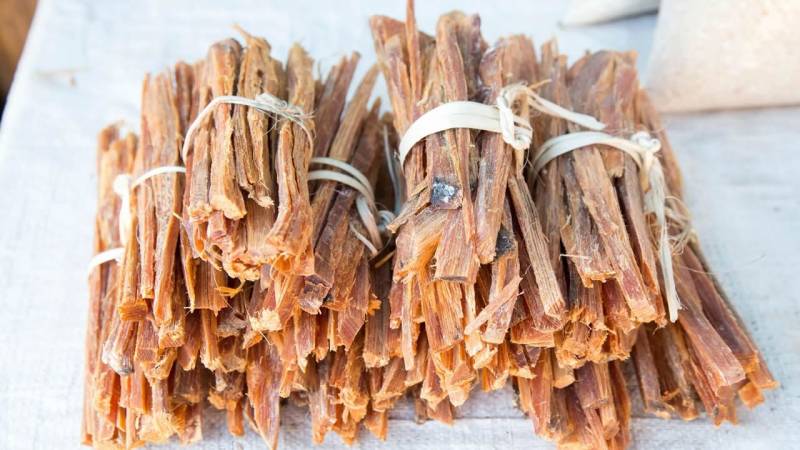
And now let's delve deeper!
The fact is: every tinder material should be very dry. The exception here is birchbark and Fatwood.
You will always find in parentheses behind the headlines whether it is ember tinder or flame tinder.
Ember tinder only smolders and must be transferred into a tinder nest. Then you blow on the tinder nest to create a flame.
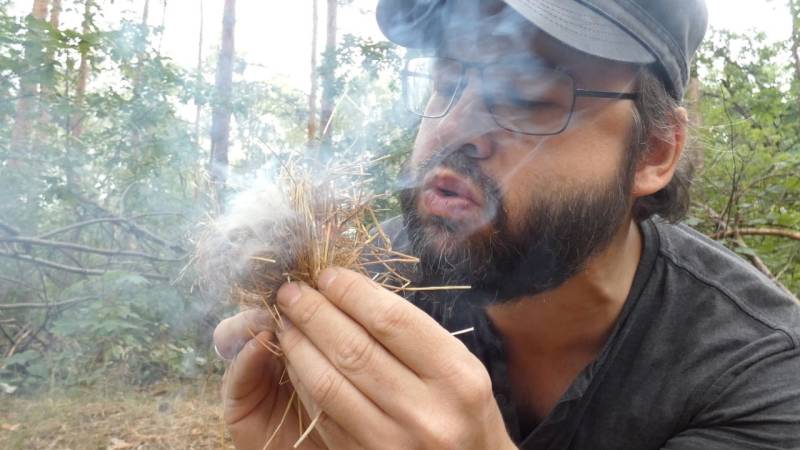
1. Birch Bark as Natural Tinder (Flame Tinder)
Dried and finely crumbled birchbark works excellently as natural tinder. The birchbark is highly flammable and catches sparks perfectly.
In addition, its essential oils burn perfectly and for a long time. Birchbark tinder can be found in nature or can be prepared specifically.
Once the birchbark is burning, you can relax and place it in your fire pit and build your fire on it. Ideally, you also have a few strips of birchbark to build up the flame.
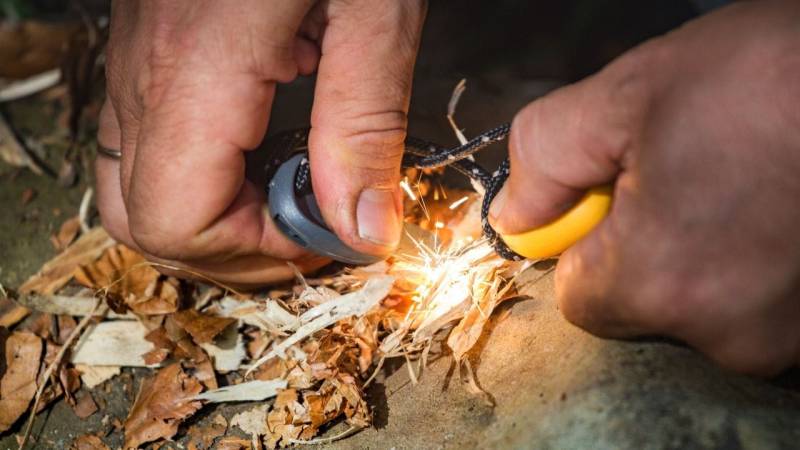
2. Fatwood - Even Better than Birch (Flame Tinder)
Fine shavings of Fatwood (also known as pine knot and Fatwood) are excellent for use as tinder.
Read my article "What is Fatwood" if you want to know how to quickly and easily find Fatwood shavings.
Fatwood is particularly popular among Bushcrafters and survivalists. My tip: you should get it and take a closer look. Fatwood is best ignited with a Ferro rod.
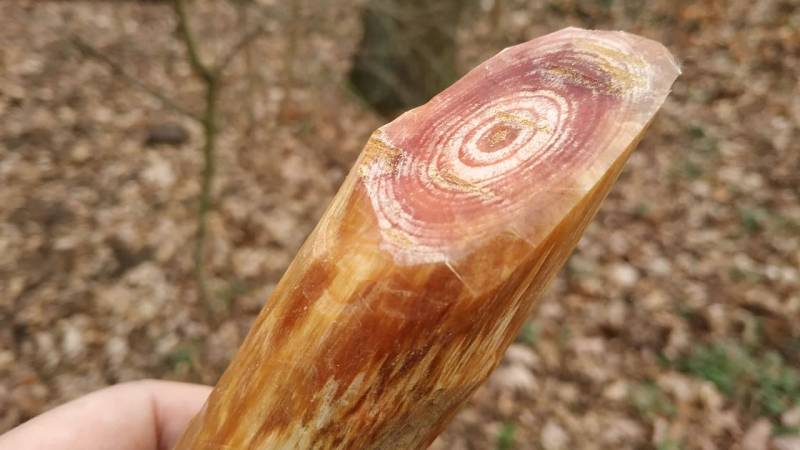
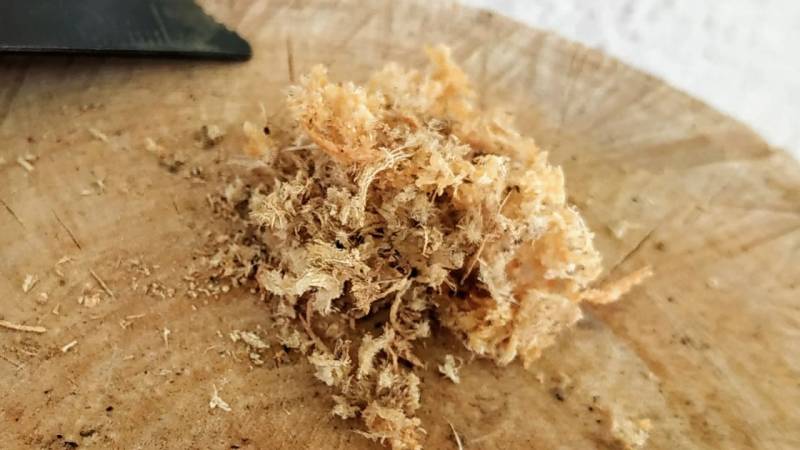
3. Tinder Fungus and Birch Polypore (Ember Tinder)
Tinder fungus and birch polypore are fungi that are suitable as natural tinder. When dry, they are easy to ignite and help start a fire with their long-lasting embers.
You can often find tinder fungi on dead tree trunks. A layer in the fungus, called the "trama," is particularly well-suited for holding embers. Tinder fungus is also known as the tinder conk.
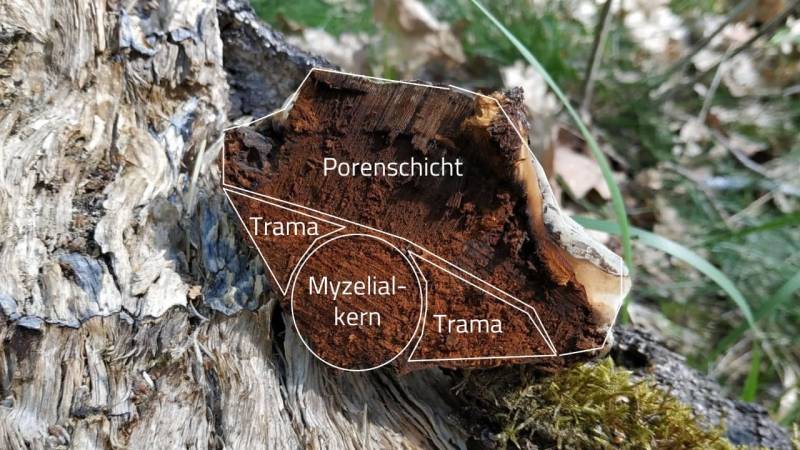
With a large and dry tinder fungus, you can also carry embers over long distances. With this fungus, you always have a smoldering tinder for your campfire.
And here's a short video of the birch polypore as tinder:
4. Coal Fungus (Ember Tinder Fungus)
I want to tell you about a fascinating fungus that I recently discovered: the Coal Fungus (Daldinia concentrica). Imagine, people have been using this little guy as a natural fire starter since the Stone Age!
I’ve learned that it mainly grows on ash trees and other deciduous trees. You can easily recognize it by its black, spherical shape.
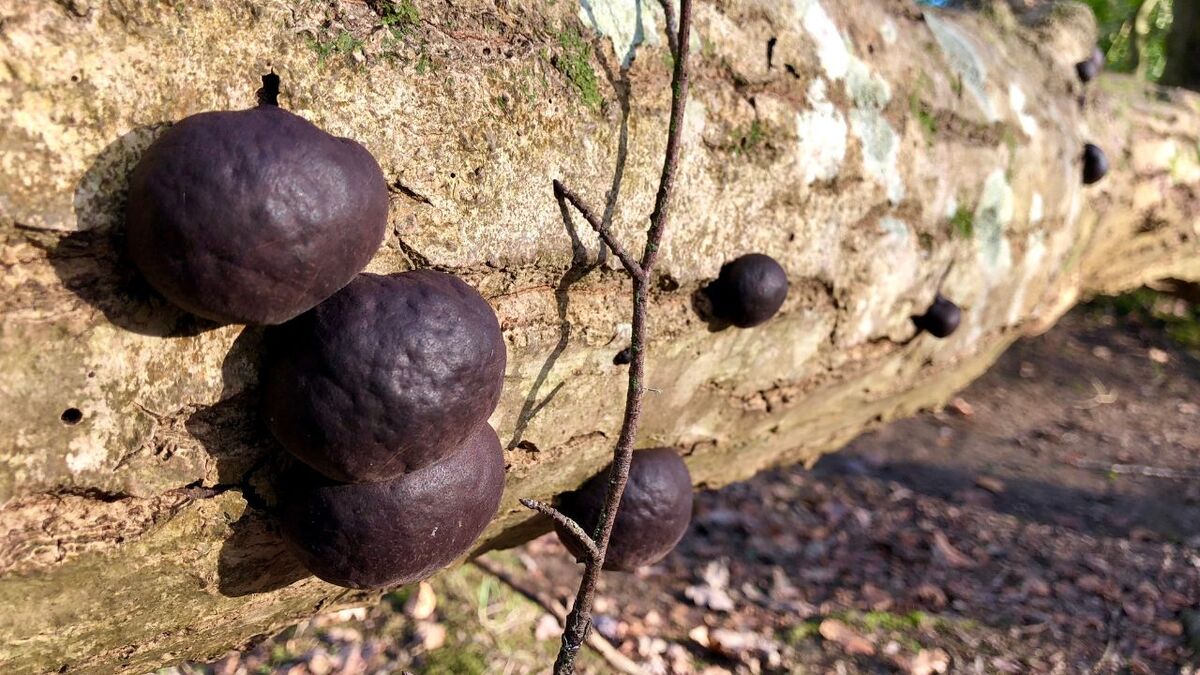
What I find particularly great:
- It ignites super easily and smolders for a very long time
- You can even use it to transport embers
- Even when it's damp, it works better than many other things
- It’s a true multitasker for various fire-making methods
But you know what? The Carbon Ball Fungus isn’t just important for us outdoor enthusiasts. It also plays a crucial role in the forest as a wood decomposer and habitat creator. That’s why I always make sure to collect it responsibly.
For me as a Bushcrafter, this fungus is worth its weight in gold.
It not only offers reliability, but also allows me to experience nature in a very special way. Sure, you need some practice in handling it, but trust me, it’s worth it!
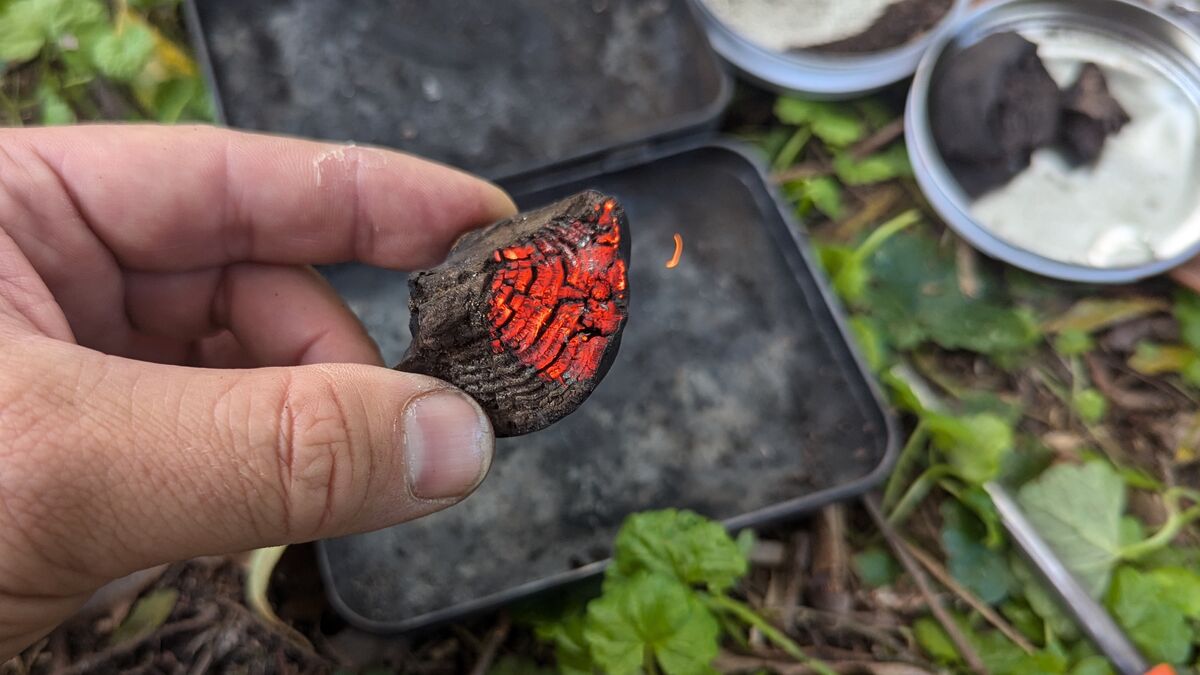
Want to learn more about this amazing coal fungus? I’ve got something for you!
In my comprehensive guide, you’ll find everything you need to know about finding, collecting, and using the Coal Fungus. Plus, I’ll tell you exciting stories about its past and why it’s so important for our forests.
Check it out: The Coal Fungus: Your Unexpected Hero in the Forest - Discover Nature's Fire Starter
5. Plant Fibers as Tinder (Flame Tinder)
Various dried plant fibers such as nettle fibers or hemp fibers can also be used as natural tinder.
They are fine-fibered, catch sparks, and hold an ember to light a fire. Dry nettle fibers are especially good.
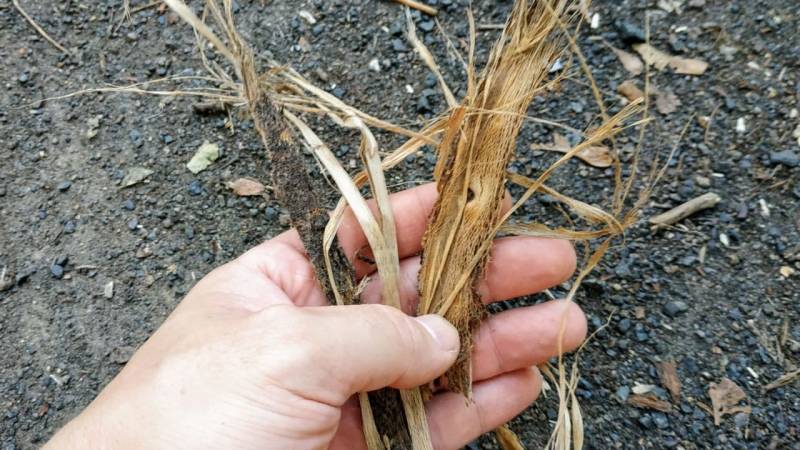
6. Cattail (Ember and Flame Tinder, Burns Quickly)
The fine hairs of dried cattails also work as natural tinder. It is important to avoid protected species. The fibers of the cattail catch sparks optimally and allow the ignition of a fire.
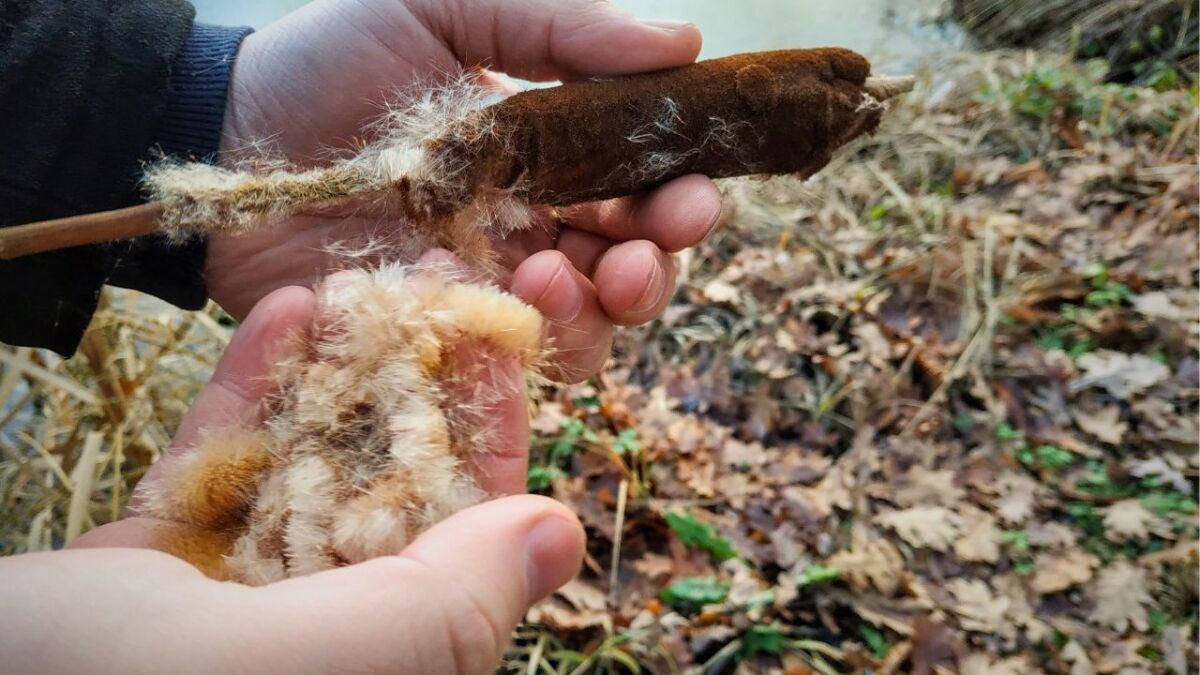
7. Feathersticks as Combustion Material for Carvers (Flame Tinder)
Feathersticks are fine wood shavings. These burn quite quickly if they are small enough. A combination with charred cotton works particularly well.
Find out more about the well-known Feathersticks and how to make them in my guide article "What are Feathersticks".
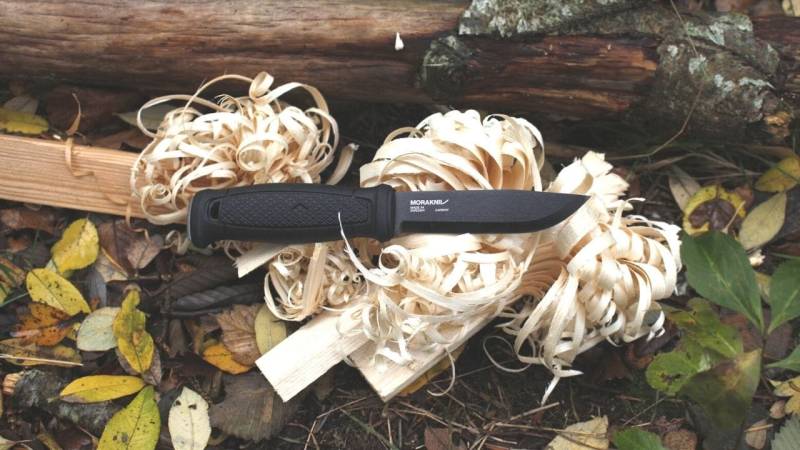
8. Windborne Seeds and Dry Natural Materials (Ember and Flame Tinder, Burns Quickly)
Windborne seeds from thistles or dandelions are good tinder. Furthermore, dry, fine-fibrous or crumbled materials like leaves, lichens, hay, or grass can be used for fire making.

9. Punk Wood - Rotten Wood as Optimal Tinder (Ember Tinder)
"Punk Wood," the mushy, fibrous interior of rotting wood, is also optimal natural tinder.
It catches sparks, smolders for a long time, and helps to start a fire even under difficult conditions.
With a large piece of punk wood, you can also transport embers over a long distance.
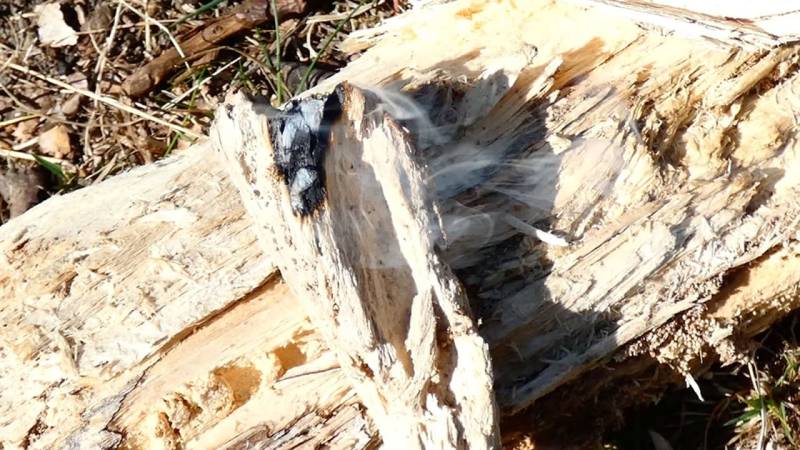
10. Charred Cotton - Perfect for the Ferro Rod (Ember Tinder)
This tinder starts to smolder particularly quickly and is a bit more intricate when you make it yourself. You need to char cotton in a tin can.
What remains is the charred fabric, which starts to smolder quickly. Perfect for the fire striker/Firesteel. But the Ferro rod is also suitable.
The complete step-by-step instructions for charred cotton can be found here.
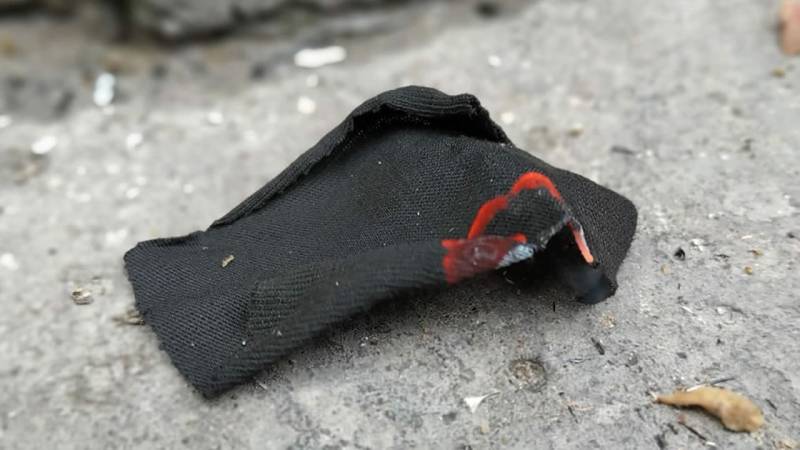
11. Coconut Fibers - Natural Tinder from the Coconut (Flame Tinder)
The fine fibers of the coconut husk also work well as natural tinder. These fibers serve as an optimal tinder, catching sparks and embers and getting the fire going.
12. Tampon as Optimal Tinder for Lightning a Fire (Flame Tinder)
Tampons are excellent as tinder because the cotton is small and tightly compressed. For this, unravel the tampon and loosen the fine cotton fibers to obtain a dry nest. This catches the sparks of your Ferro rod optimally.
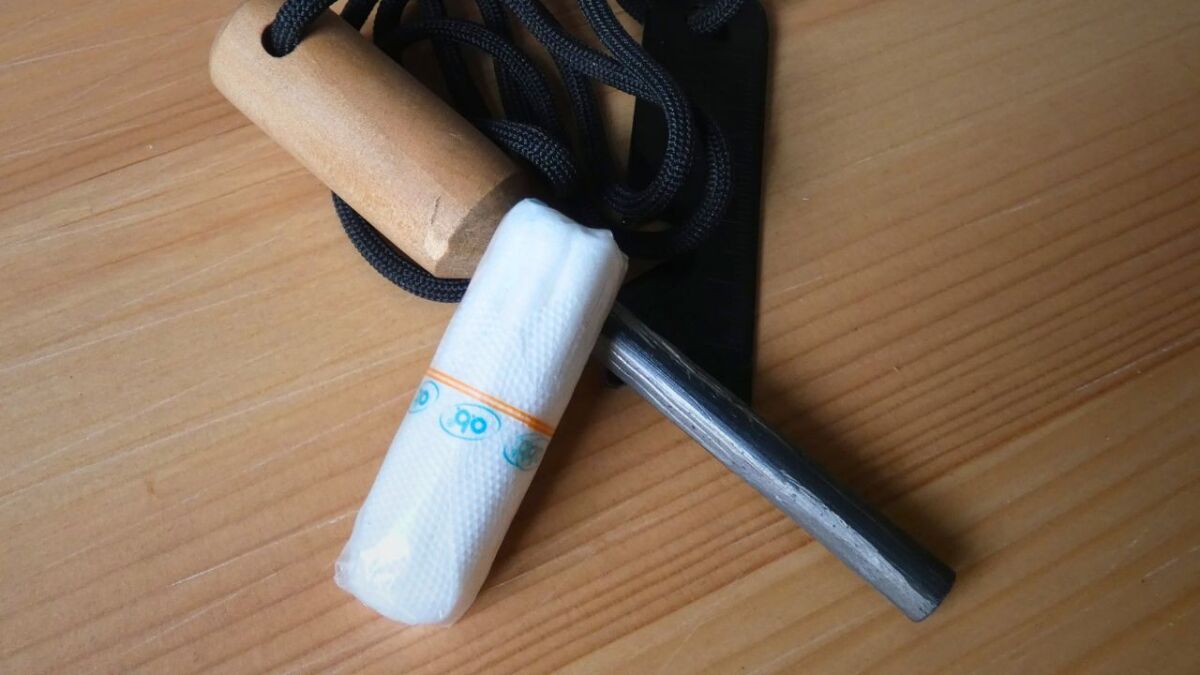
13. Cosmetic Cotton Pads as Uncomplicated Tinder (Flame Tinder)
No need to disassemble cosmetic cotton pads as they're naturally airy. Just scrunch up the cotton pad slightly for a simple and effective tinder.
14. Unravel Makeup Pads for Optimum Tinder Nest (Ember Tinder)
With makeup remover pads, proceed similarly as with tampons. Shred and tear up the pads to make a fine-fibered nest of cotton that is ideal for tinder.
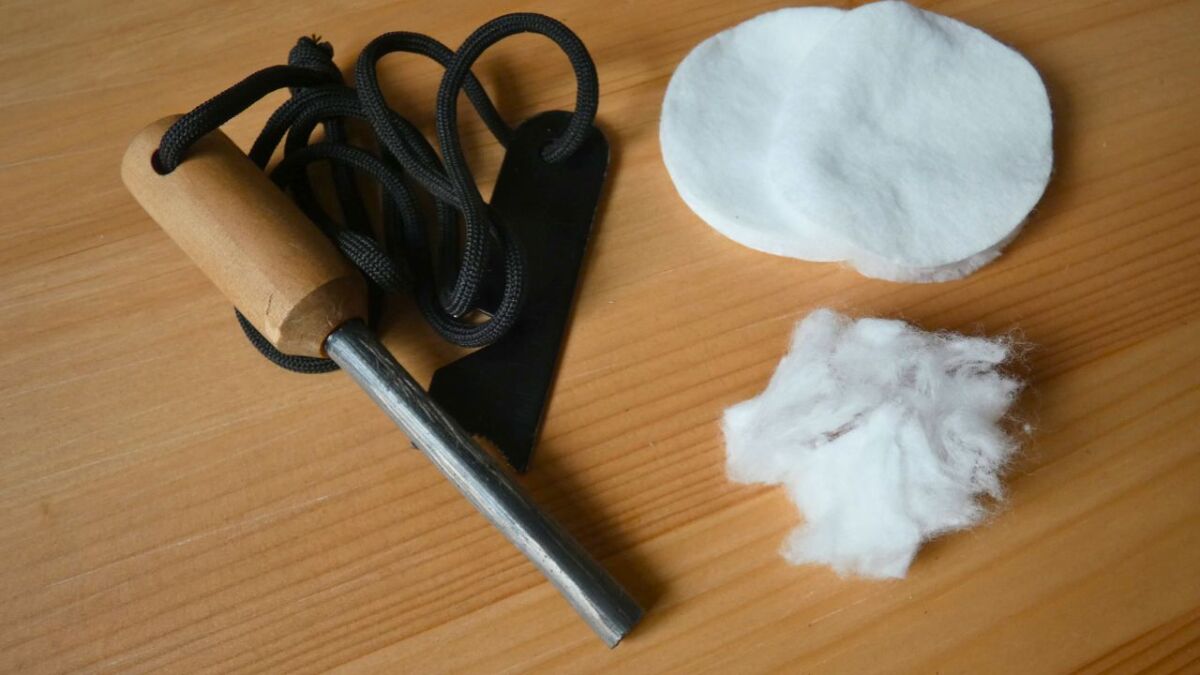
15. Homemade Charcoal as Reliable Tinder (Ember Tinder)
Sure, you can buy charcoal. But: You can also simply make it yourself.
Just like with charred cotton, you put a few thin wood splinters in a tin can with a small hole. Then place it in the campfire. When no white smoke comes out anymore, the wood is charred. Let it cool down and it's ready to take with you.
For the making of charcoal, I also wrote a step-by-step guide.
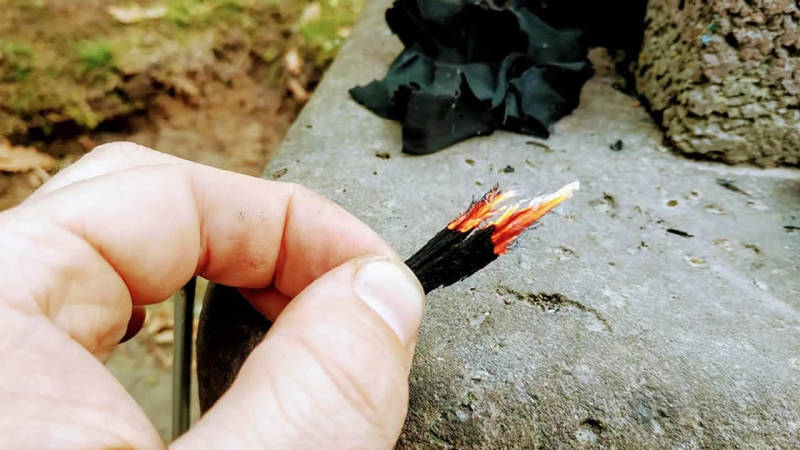
You can also make charred makeup remover pads.
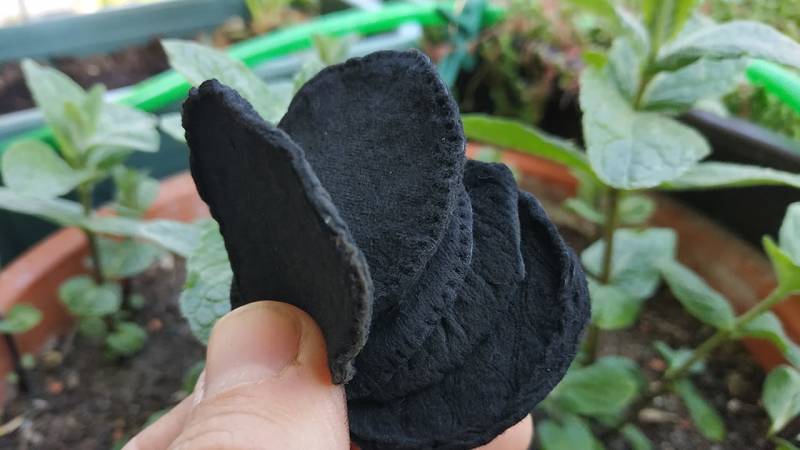
16. Linen Tinder - Formerly a Classic Among Tinders (Flame Tinder)
These include, among others, old cotton remnants that are soaked in kerosene, oil, fat, or diesel. You can also use old cleaning rags from machine shops and car repair garages for this purpose.
Reading tip: 10 Uses for Animal Fat in the Wild
17. Cotton Pads with Petroleum Jelly for Waterproof Tinder (Flame Tinder)
Take a handful of cotton and mix it with two or three tablespoons of petroleum jelly. Pack everything in a bag or a freezer bag and knead the mixture thoroughly. Afterwards, you have good tinder that is even quite waterproof.
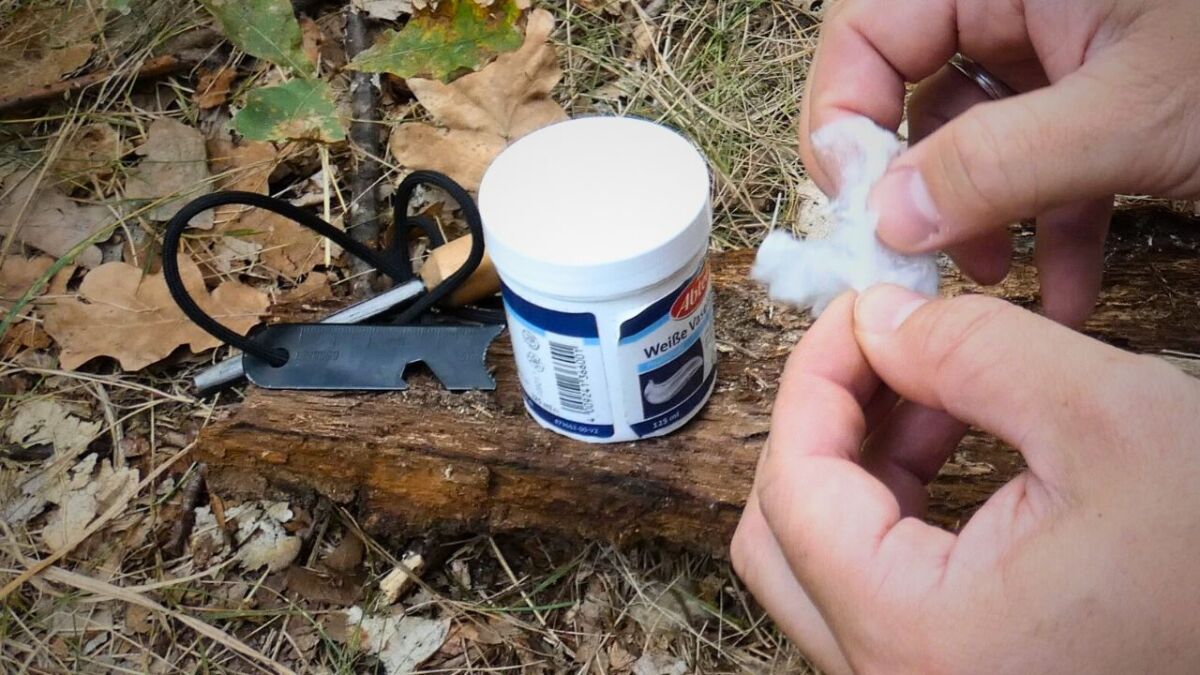
Once ignited, the cotton with the petroleum jelly burns long and strong. Perfect for any bushcraft and survival fire.
Moreover, take a look at my video. There I show you in detail how to make tinder with cotton and petroleum jelly.
18. Candle Wax Instead of Petroleum Jelly for Long-Lasting Tinder (Flame Tinder)
Alternatively, you can soak half of the cotton pads in liquid candle wax. This also makes for a long-lasting and reliable tinder.
19. Firelighters - The Last Resort for Lazy Tinder Makers (Flame Tinder)
Well, anyone can light a fire with firelighters. If the above tinder options do not appeal to you, simply go to the nearest supermarket and get firelighters.
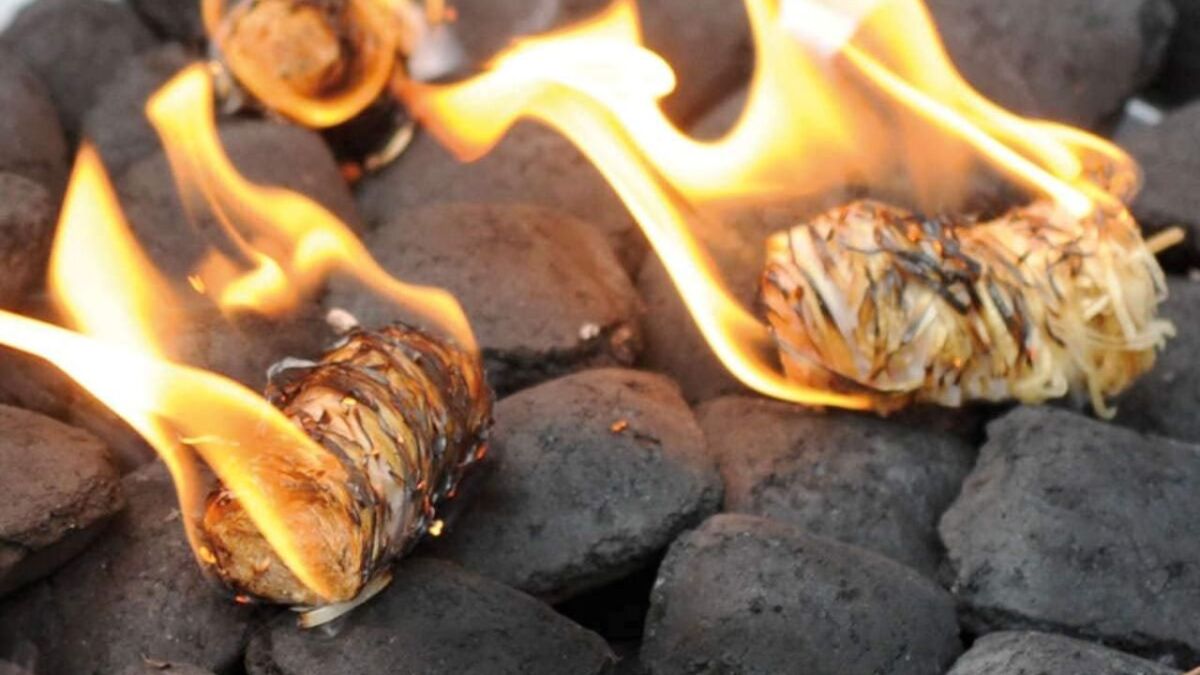
20. Kitchen and Toilet Paper - The Simple Tinder (Flame Tinder)
The fine papers also work as tinder. But you must admit, it's a bit boring, right?
21. Lint from Jeans (Ember Tinder)
Yes, you read that correctly. If you rub and stroke your knife blade over a piece of denim, lint is created. These lints can be ignited when dry.
Finally, my reading recommendation for you:
With your tinder, you now light your fire. But which structure of the fire is the right one for your purposes?
You can read that in my e-Book: "Fire: 12 Popular Construction Forms" I intentionally kept the e-book simple and equipped it with high-quality graphics.
Starting a Fire with Flint? - Does That Really Work?
A piece of flint itself cannot ignite a fire, even though this is often claimed (source).
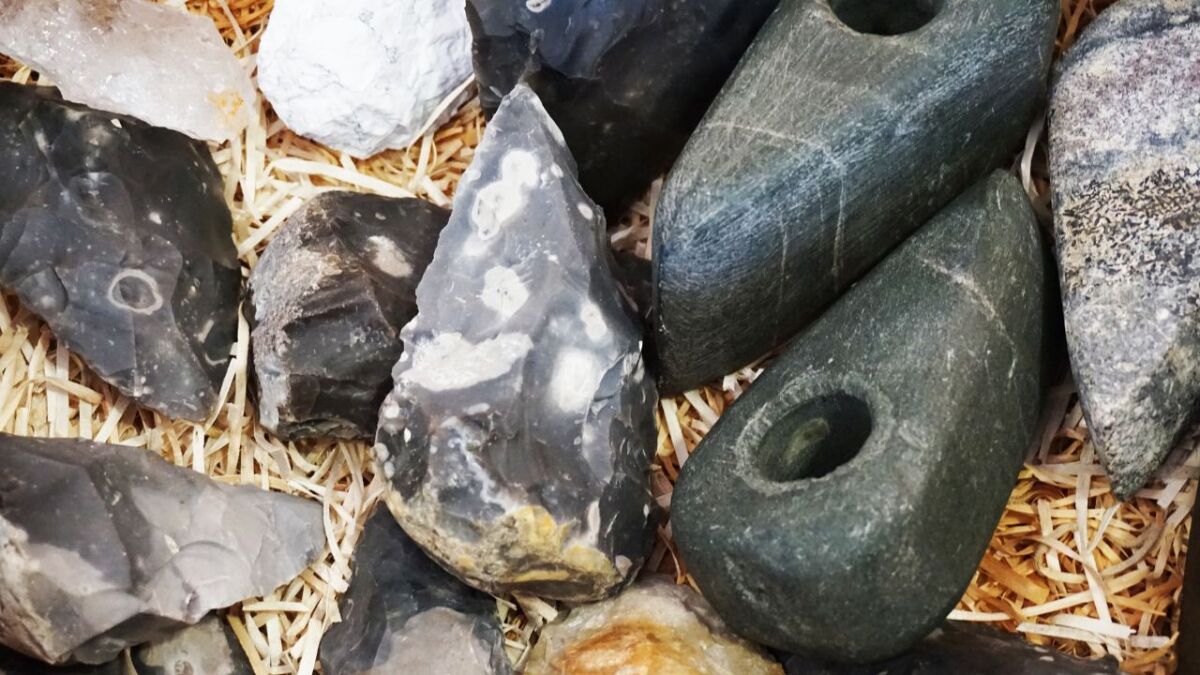
The sparks that are generated when striking a piece of flint do not have a high enough temperature to ignite flammable material (also called "cold sparks").
Flint is used in fire-making only because of its hardness.
It is used to strike sparks from an iron-containing material like Pyrite or Markasit.
As you stroke off tiny pieces of rock, they ignite into hot sparks due to the friction. These can be kindled with suitable tinder.
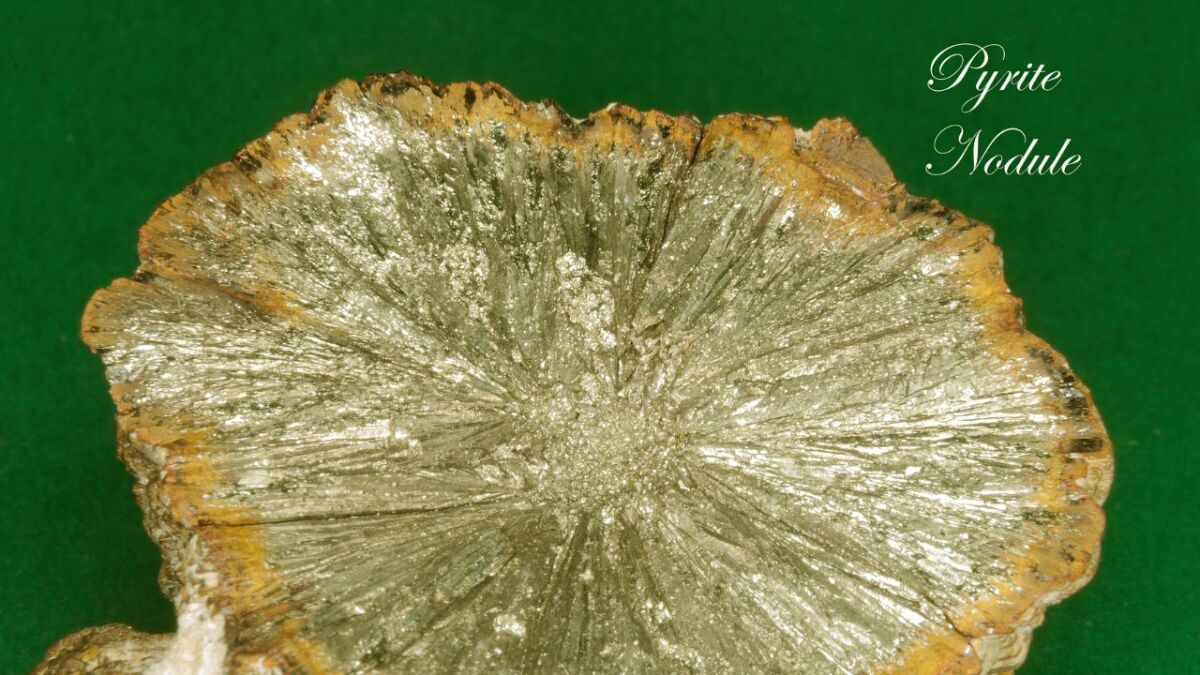
A piece of flint is therefore the only tool to produce sparks. The actual heat comes from pyrite or Markasit.
Without these iron-containing stones, a piece of flint alone cannot ignite a fire.
You always need this combination of flint and iron to create the necessary heat for a spark to fly.
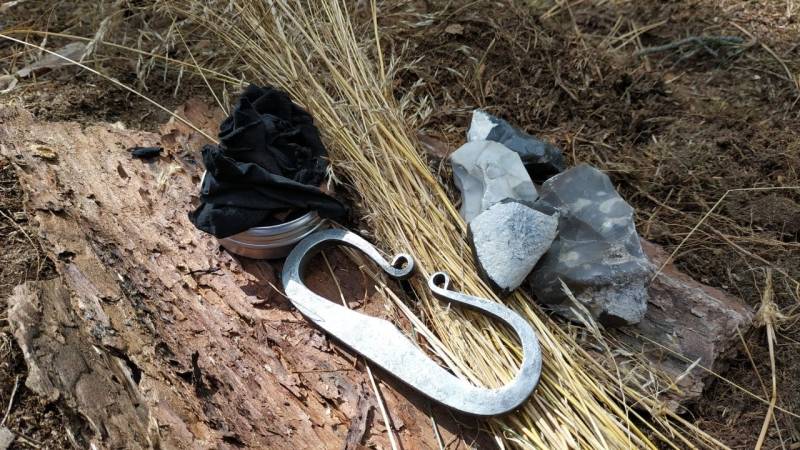
Questions and Answers about Tinder and Starting a Fire
What is the best tinder for beginners?
For beginners, birchbark is a good choice. It is easy to find and process and burns well. Fatwood is also a suitable option, but it can be trickier to locate. Windborne seeds are another good alternative, but they're not as enduring as birchbark or Fatwood.
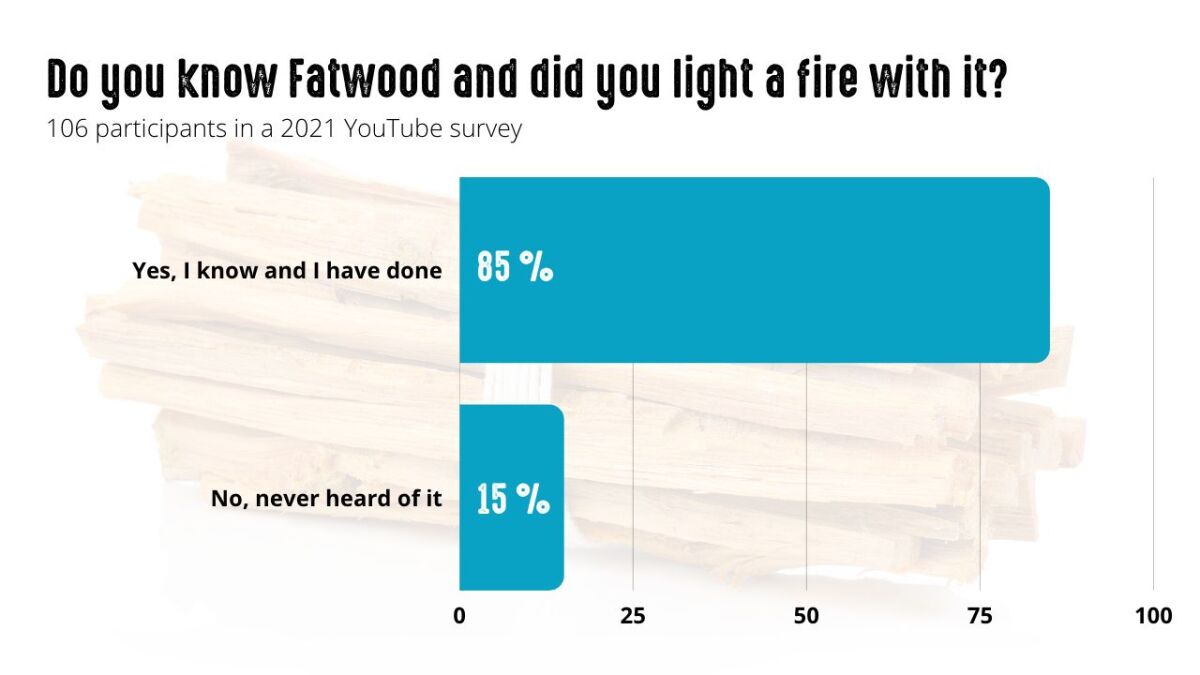
Why does birchbark burn so well?
Birchbark contains essential oils that make it easily ignitable. It's also very dry, which contributes to its good combustibility.
Which types of tinder are water-resistant?
Water-resistant tinder types include Fatwood and birchbark, as their high resin or oil content allows them to ignite well even when moist.
Which types of tinder are the easiest to find?
The easiest to find tinders are birchbark and dry grass because they are widespread and easily identifiable in many natural environments.
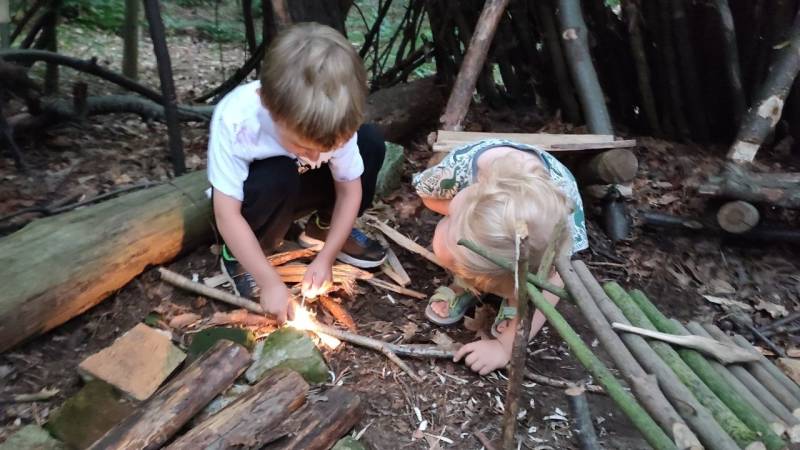
What is the best tinder for a Ferro rod?
Birchbark and Fatwood are best used with a Ferro rod because their high resin or oil content makes it easy to catch sparks and produce a strong flame.
What is the best tinder for the fire striker and flint?
Charred cotton is the best tinder for the fire striker and flint because it captures even the smallest sparks, making igniting a fire easier.
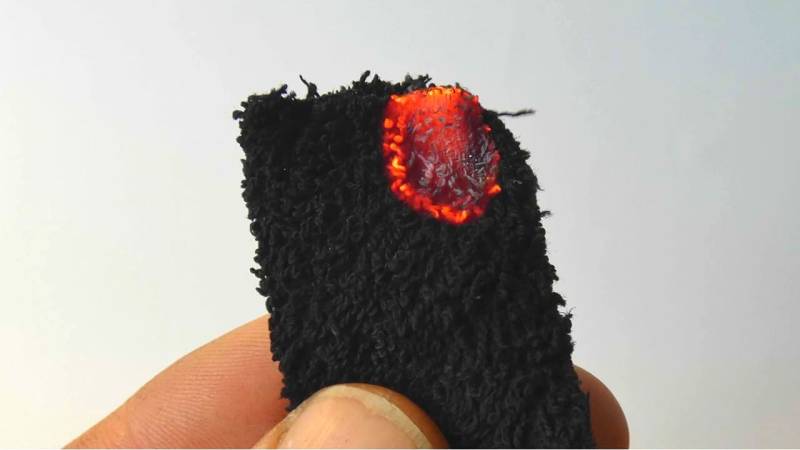
What can you use as tinder?
You can use various materials as tinder, including birchbark, Fatwood, tinder fungus, plant fibers, cattails, Feathersticks, windborne seeds, mildewed wood, charred cotton, coconut fibers, tampons, and cotton pads.
How do you use tinder fungus?
You use tinder fungus by drying it and preparing a fine layer, the "trama," which then captures sparks or embers and smolders long enough to ignite a fire.
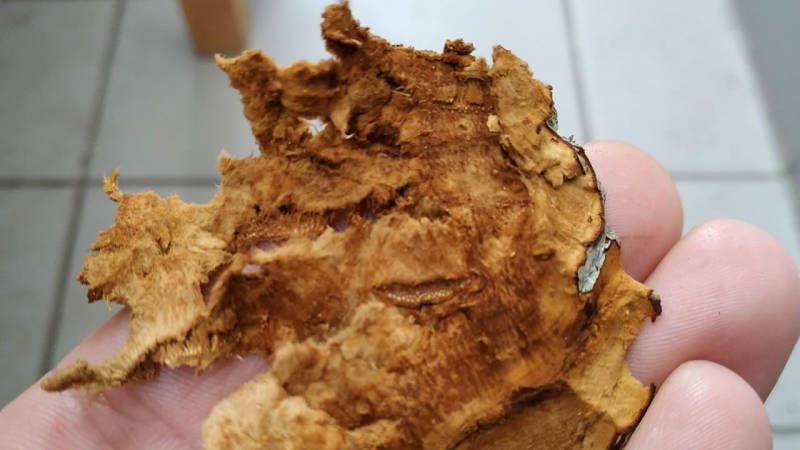
How many times can you use a Ferro rod?
The number of times you can use a Ferro rod depends on the quality of the Ferro rod and how it is cared for. A good Ferro rod can last for many years if properly maintained.
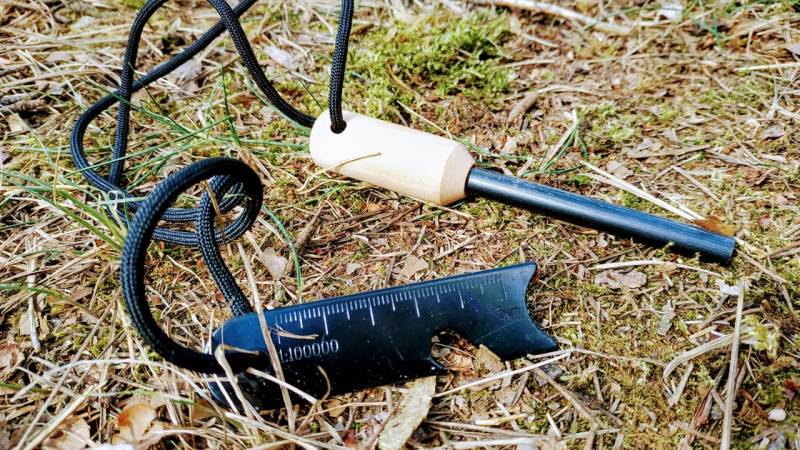
Also read
The best Ferro Rod (Test, Buying Guide and Comparison) – Discover the best Ferro rod for your outdoor adventures in the current test and comparison. Find the ideal fire starter for survival.
Tinder for Every Situation - My Recommendations for Optimal Fire Making
As you have read, there are many ways to collect tinder in nature. Alternatively, you can manufacture tinder yourself.
You will surely find a method that is easiest for you. Because what could be worse than an urgently needed fire not catching?
For the fire striker - also called "fire striking" - my tip is charred cotton. Although it's more complex to make, it catches fire with the smallest spark.
Thereafter, you transfer it to a tinder nest, and nothing will stand in the way of your fire.
Use the Ferro rod, then you're on the safe side with birchbark and Fatwood.
Now I'd like to know from you, what is your preferred tinder?
What methods have you had good experiences with?
Write it here in the comments.


Author of the guide
Martin Gebhardt
Hey, I'm Martin. On my blog, you will learn the basics and numerous details about living in the wild. I think survival, bushcraft and the good life in nature are the keys to happiness. Find me here on Instagram or on YouTube. You can find more about my mission on the About Me page.
Was this guide helpful?
65 people found this guide helpful.
4.94 out of 5 points (66 Ratings)
Comments (0)
This post may contain affiliate links. So if you click on the links and make a purchase, I will receive a small commission at no additional cost to you. Click here, to learn more about it.


